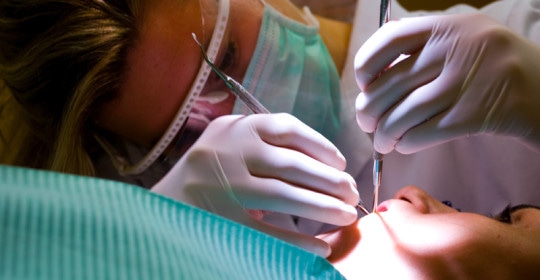What Is Laser Treatment For Teeth?


What is laser treatment for teeth?
Laser treatment for teeth can be used to reshape gum tissue and bone, treat tooth decay, whiten teeth and remove bacteria. Lasers may be less painful than drills and reduce anxiety in people with aversions to traditional drills. Lasers also minimise swelling and don’t cause as much bleeding during soft tissue procedures.
When lasers are applied to gums the process is called called a soft tissue laser and when it’s applied on bone it is called a hard tissue laser. Lasers are being used to remove bacteria and reshape gums when the patient is suffering from gum disease or when a root canal procedure is being conducted. Lasers have also proved useful for the removal of lesions in the mouth and to resolve the pain of canker sores. A biopsy, the removal of a small tissue sample for later examination for cancer, can also be conducted by using a laser.
Laser treatment for teeth is starting to replace drills to remove decay. At this stage of development in terms of removing decay, lasers work best on the surface of the tooth as opposed to deep cavities. If the cavity is shallow, lasers can be used to prepare the surrounding enamel for a filling and remove any traces of decay in the tooth.
The other use of lasers in dentistry is in order to speed up teeth whitening after a solution comprised of peroxide is applied to the teeth. This solution is activated by the laser and speeds up the process.
The current disadvantages to lasers are that they cannot be used on teeth with fillings or completely eliminate the need for anaesthesia. Cavities between teeth, and big cavities, can’t be filled via laser treatment for teeth. Drills still need to be used for these procedures. Lasers are also still an expensive option compared to the use of a traditional drill.

